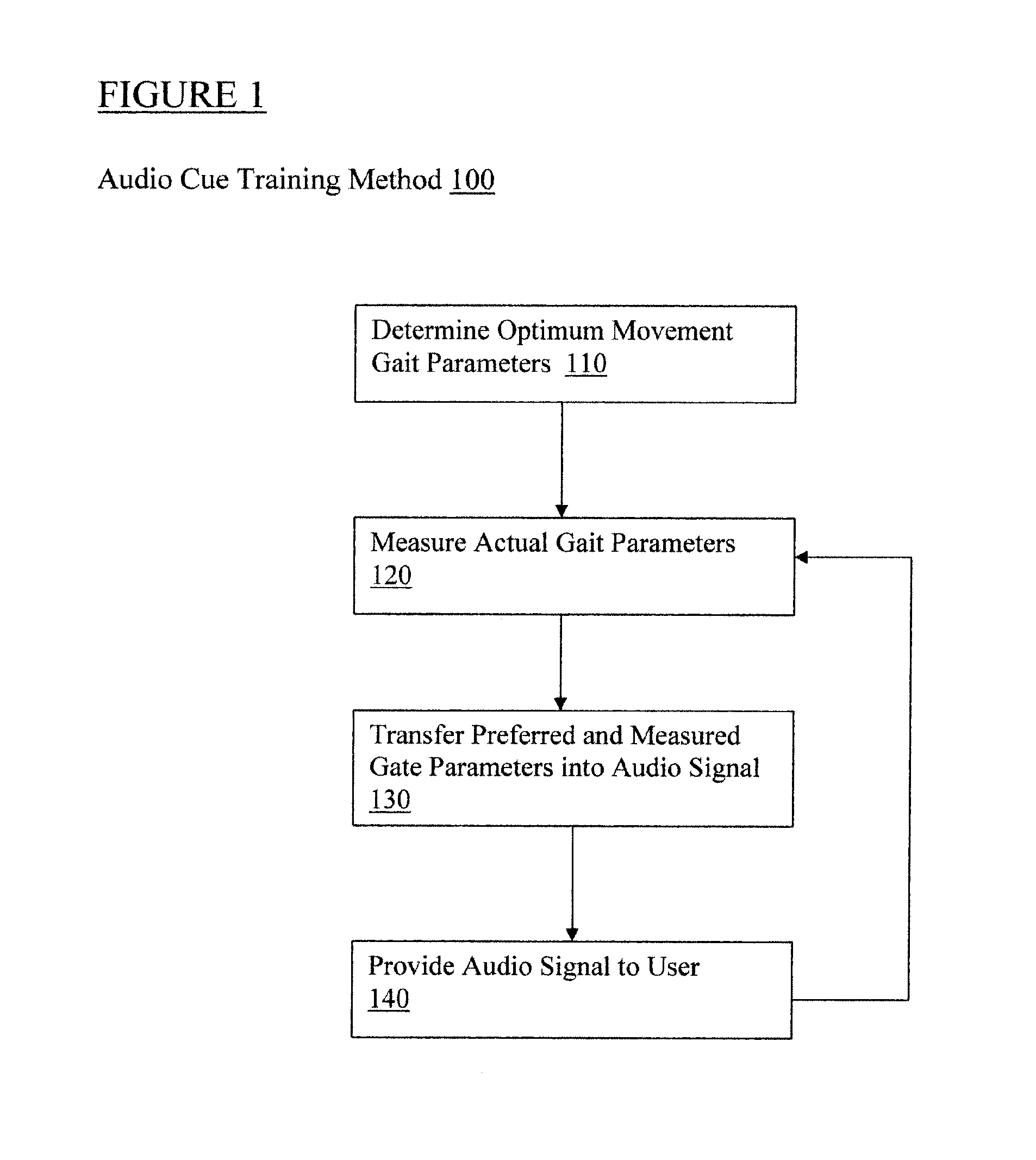Step trainer for enhanced performance using rhythmic cues
a step trainer and enhanced performance technology, applied in the field of step trainers for enhanced performance using rhythmic cues, can solve the problems of limiting the patient's coordination and motor control, affecting the gait of the patient, and affecting the gait recovery process, so as to improve the gait of the person
- Summary
- Abstract
- Description
- Claims
- Application Information
AI Technical Summary
Benefits of technology
Problems solved by technology
Method used
Image
Examples
Embodiment Construction
[0023]Referring to FIG. 5, a schematic depiction 500 of a gait parameters includes a left foot 510 and right foot 520, each with a sensor 530. The expression “step length” is defined as a distance between the point of initial contact of one foot and the point of initial contact of the opposite foot. In a normal gait, right and left step lengths are the same, thereby having a step length symmetry of 1. The expression of a “step length” is defined to be the distance between successive points of initial contact of the same foot. Again, the right and left step lengths are equal for normal gait, with a step length symmetry of 1. The expression of “step rate” is defined to be the number of steps per minute. For example, a pedometer counts the number of steps and determines the distance by simply multiplying this number with keyed-in average step length. As described above, the gait sensors disclosed in various embodiments of the present invention, count the number of steps and measure the...
PUM
 Login to View More
Login to View More Abstract
Description
Claims
Application Information
 Login to View More
Login to View More - R&D
- Intellectual Property
- Life Sciences
- Materials
- Tech Scout
- Unparalleled Data Quality
- Higher Quality Content
- 60% Fewer Hallucinations
Browse by: Latest US Patents, China's latest patents, Technical Efficacy Thesaurus, Application Domain, Technology Topic, Popular Technical Reports.
© 2025 PatSnap. All rights reserved.Legal|Privacy policy|Modern Slavery Act Transparency Statement|Sitemap|About US| Contact US: help@patsnap.com



